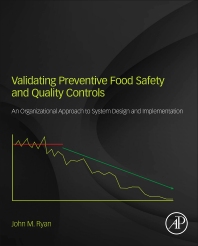With more than 1,800,000 confirmed cases globally, the World Health Organization (WHO) declared COVID-19 as a pandemic. At the time this article was written (mid-April), there has been over 500,000 confirmed cases and 20,000-plus deaths in the U.S. As the COVID-19 pandemic continues to evolve, universities and businesses are increasingly teaching and doing business online. Community organizations have canceled events and gatherings amidst news reports of stores “running out of hand sanitizer and toilet paper.” While some say people are overreacting, others say these precautionary measures should have been taken earlier. In a relative knowledge vacuum about the virus, it is understandable how paranoia and fear may spread throughout communities.
SARS-Cov-2, which is the virus causing COVID-19, is not a foodborne pathogen, but is transmitted through respiratory droplets produced when an infected person coughs, sneezes or talks. Currently there is no peer-reviewed article showing that coronavirus can be spread through food. Nothing may ever be the same again, and it is worth thinking about how those working along the food supply chain can adapt to the new challenges by re-examining their company’s food safety culture.
The way that an organization approaches food safety, with shared values among management and staff, is the foundation of food safety culture. An organization with a strong food safety culture demonstrates to its employees and customers that making safe food is an important commitment. Three key elements of a successful food safety culture are communication, engagement, and leadership:
- Communication and training are among the essential elements of food safety culture. Many food processors lack effective employee training. Food safety only works by changing behavior, so simply conducting training does not mean employees will actually change their behavior.
- Engagement enables employees to contribute to the food safety plans in the organization. Employees who are involved with the design and implementation of the food safety program are more likely to “buy-in” to the ideas presented.
- Leadership plays an essential role in an organization’s food safety culture. Leaders are necessary to identify food safety goals and provide focus to keep everyone on track to achieve success. Leaders need to develop communication plans to deliver their food safety expectations to employees and share their food safety culture initiatives from the top of the organization. Leaders also need to model recommended safety behavior in their actions as well as words.
Small steps can be taken to strengthen your food safety culture. Enhancing personal hygiene for employees is a key area whether there is a pandemic or not, so here are a few fundamental guidelines to get started:
- Emphasize effective hand hygiene including washing hands for at least 20 seconds, especially after going to the bathroom, before eating, and after blowing your nose, coughing, or sneezing.
- Always wash hands with soap and water. If soap and water are not readily available, then use an alcohol-based hand sanitizer with at least 60% alcohol and avoid working with unwrapped or exposed foods.
- Avoid touching your eyes, nose, and mouth.
- Use gloves to avoid direct bare hand contact with ready-to-eat foods.
- Cover your cough or sneeze with a tissue, then throw the tissue in the trash and wash hands afterward.
Developing and implementing workplace food safety controls can strengthen the trust between leaders and employees by emphasizing how their practices can protect their customers, peers, and themselves. Management can make a further impact by pre-screening (e.g., taking their temperature and assessing symptoms prior to starting work), disinfecting and cleaning work spaces and equipment, and adding more frequent cleaning of high-touch surfaces.
Employees can contribute by regularly self-monitoring (e.g., taking their temperature and assessing symptoms of coronavirus), wearing a mask or face covering, and being vigilant about practicing social distancing and staying at least six feet from other people whenever possible. Together, with a daily commitment to these initiatives, management and employees can create an elevated food safety culture at their workplace that can evolve to meet today’s challenges and those that arise in the future.
References
- Centers for Disease Control. 2020. Implementing Safety Practices for Critical Infrastructure Workers Who May Have Had Exposure to a Person with Suspected or Confirmed COVID-19. Assessed April 12, 2020, at https://www.cdc.gov/coronavirus/2019-ncov/community/critical-workers/implementing-safety-practices.html?deliveryName=USCDC_1191-DM25531
- U.S. Food and Drug Administration. 2020. Food Safety and the Coronavirus Disease 2019 (COVID-19). Assessed April 12, 2020, at https://www.fda.gov/food/food-safety-during-emergencies/food-safety-and-coronavirus-disease-2019-covid-19?utm_campaign=FoodCOVID_04042020&utm_medium=email&utm_source=Eloqua#5e897fce19ac5
- Government of Manitoba. 2020. Food Safety Culture. Assessed April 12, 2020, at https://www.gov.mb.ca/agriculture/food-safety/at-the-food-processor/food-safety-culture.html
- Yiannas, F. 2009. Food safety culture creating a behavior-based food safety management system. Springer, New York, NY.
Click here for more COVID-19 coverage and how it is affecting the refrigerated and frozen foods industry.










